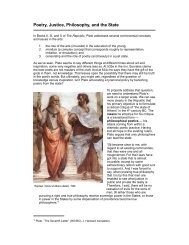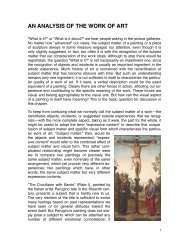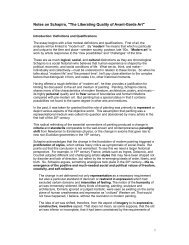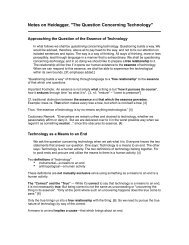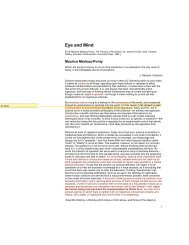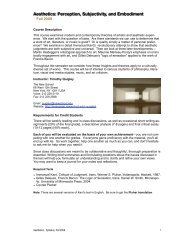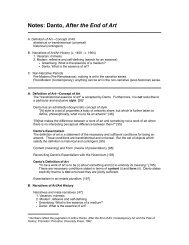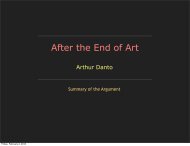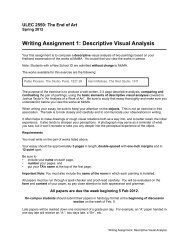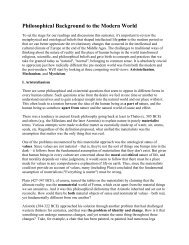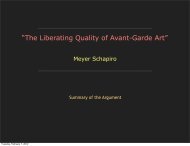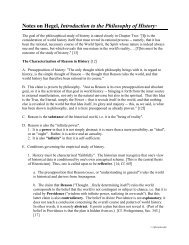The Art of Romare Bearden - Timothy R. Quigley
The Art of Romare Bearden - Timothy R. Quigley
The Art of Romare Bearden - Timothy R. Quigley
Create successful ePaper yourself
Turn your PDF publications into a flip-book with our unique Google optimized e-Paper software.
<strong>The</strong> MassachusettsReviewhis mark upon the world through art and his ties to his group andits claims upon him.Fortunately for them and for us, <strong>Romare</strong> <strong>Bearden</strong> has faced thesequestions for himself, and since he is an artist whose social consciousness is no less intense than his dedication to art, his example is<strong>of</strong> utmost importance for all who are concerned with grasping something <strong>of</strong> the complex interrelations between race, culture and theindividual artist as they exist in the United States. <strong>Bearden</strong> isaware that for Negro Americans these are times <strong>of</strong> eloquent protestand intense struggle, times <strong>of</strong> rejection and redefinition?but he alsoknows that all this does little to make the question <strong>of</strong> the relation <strong>of</strong>the Negro artist to painting any less difficult. And if the cries in thestreet are to find effective statement on canvas they must undergoa metamorphosis. For in painting, <strong>Bearden</strong> has recently observed,there is little room for the lachrymose, for self-pity or raw complaint; and if they are to find a place in painting this can only beaccomplished by infusing them with the freshest sensibility <strong>of</strong> thetimes as it finds existence in the elements <strong>of</strong> painting.During the late Thirties when I first became aware <strong>of</strong> <strong>Bearden</strong>'swork, he was painting scenes <strong>of</strong> the Depression in a style stronglyinfluenced by the Mexican muralists. This work was powerful, thescenes grim and brooding, and through his depiction <strong>of</strong> unemployedworkingmen in Harlem he was able, while evoking the Southernpast, to move beyond the usual protest painting <strong>of</strong> that period toreveal something <strong>of</strong> the universal elements <strong>of</strong> an abiding humancondition. By striving to depict the times, by reducing scene, character and atmosphere to a style, he caught both the universality <strong>of</strong>Harlem life and the "harlemness" <strong>of</strong> the national human predicament.I recall that later under the dual influences <strong>of</strong> Hemingway andthe poetic tragedy <strong>of</strong> Frederico Garcia Lorca, <strong>Bearden</strong> created avoluminous series <strong>of</strong> drawings and paintings inspired by Lorca'sLament for Ignacion Sanchez Mejias. He had become interested inmyth and ritual as potent forms for ordering human experience,and it would seem that by stepping back from the immediacy <strong>of</strong> theHarlem experience?which he knew both from boyhood and asa social worker?he was freed to give expression to the essentiallypoetic side <strong>of</strong> his vision. <strong>The</strong> products <strong>of</strong> that period were marked bya palette which in contrast with the somber colors <strong>of</strong> the earlier workand despite the tragic theme with its underlying allusions to Christian rite and mystery, was brightly sensual. And despite their havingbeen consciously influenced by the compositional patterns <strong>of</strong> theItalian primitives, and the Dutch masters, these works were alsoresolutely abstract.676



